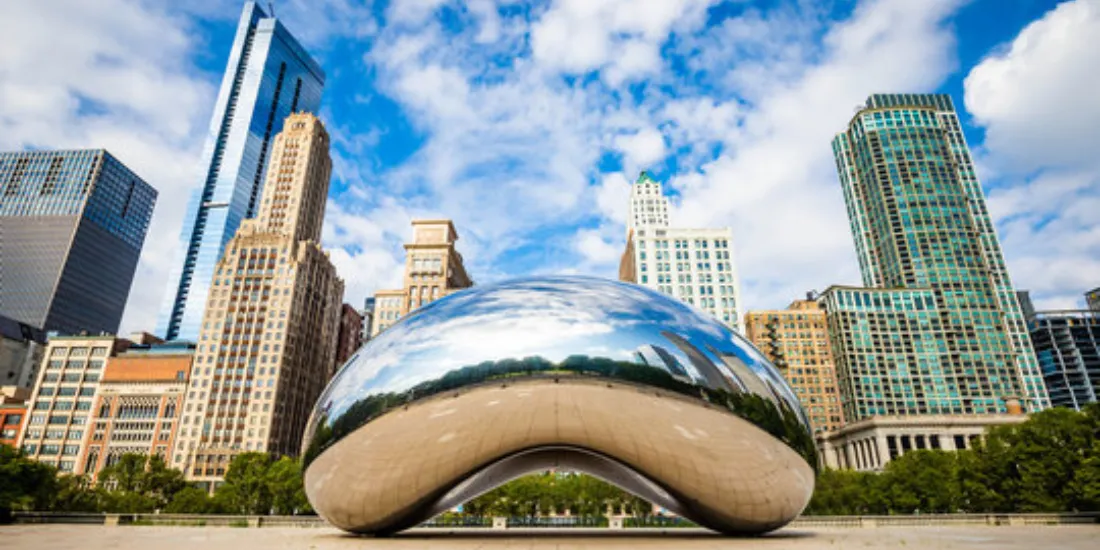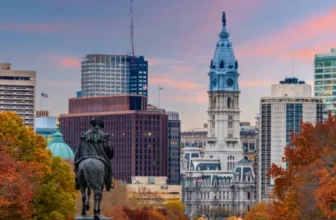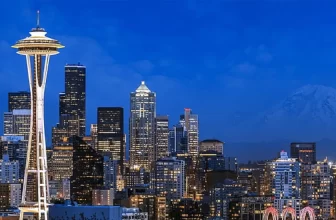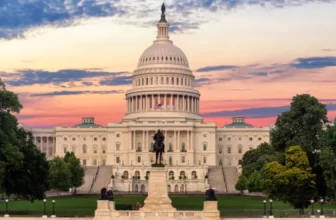
The Windy City Awaits: Your Complete Guide to Study in Chicago
Chicago isn’t just another American city. It’s a living, breathing metropolis where ambition meets opportunity at every corner. When you choose to study in Chicago, you’re not just picking a destination – you’re choosing a launchpad for your future. Picture this: world-class universities nestled between towering skyscrapers and Lake Michigan’s endless blue horizon. The third-largest city in the United States pulses with an energy that’s impossible to ignore. From the iconic Willis Tower piercing the clouds to the bustling streets of the Loop, Chicago offers international students an authentic American experience wrapped in Midwestern charm. The city’s rich history spans over 180 years, transforming from a small trading post to a global powerhouse in finance, technology, and education.
Why Chicago Matters for International Students
Let’s cut to the chase. Chicago isn’t playing around when it comes to education. The city hosts over 400,000 college students annually, with international students making up nearly 15% of that population. That’s not a coincidence.
First, the academic firepower here is undeniable. We’re talking about institutions that have produced 98 Nobel laureates collectively. The University of Chicago alone boasts 94 Nobel Prize winners among its faculty and alumni. Northwestern University consistently ranks in the global top 30. These aren’t just names on a diploma – they’re tickets to the world’s most exclusive professional networks.
But here’s what really sets Chicago apart: opportunity. The city’s economy, valued at $689 billion, rivals entire countries. Major corporations like Boeing, McDonald’s, and Abbott Laboratories call Chicago home. For international students, this translates to internships, co-ops, and job placements that actually matter. The Optional Practical Training (OPT) opportunities here are gold.
Then there’s the diversity factor. Walk through any Chicago neighborhood and you’ll hear dozens of languages. Over 180 nationalities call this city home. You won’t feel like an outsider here – you’ll feel like you belong. The international student support systems are robust, from dedicated campus resources to city-wide cultural organizations.
And let’s talk money. While Chicago isn’t cheap, it’s significantly more affordable than New York or San Francisco. Your dollar stretches further here without sacrificing quality of life or career prospects.
Top 10 Universities and Colleges
1. University of Chicago
The heavyweight champion of Chicago academia. Founded in 1890, UChicago doesn’t just educate – it transforms. With an acceptance rate hovering around 6%, getting in is tough. But once you’re there? You’re studying where modern economics was born, where the first nuclear reaction happened, and where Barack Obama once taught law. The Gothic architecture makes you feel like you’re at Hogwarts, except the magic here is real intellectual rigor. Their economics program? Legendary. Their research output? Staggering. Annual research funding exceeds $420 million.
2. Northwestern University
Straddling Chicago and Evanston, Northwestern is where innovation meets tradition. The Kellogg School of Management consistently ranks among the world’s top 5 MBA programs. Their journalism school? It’s produced 38 Pulitzer Prize winners. The engineering programs collaborate directly with Chicago’s tech scene. With over 21,000 students and a $14.96 billion endowment, resources here are virtually limitless. The lakefront campus is so beautiful it hurts.
3. Illinois Institute of Technology
IIT is Chicago’s tech powerhouse. Mies van der Rohe designed the campus – it’s a modernist masterpiece. They’re pumping out engineers, architects, and tech entrepreneurs like it’s their job (because it is). The university holds over 200 patents. Their cybersecurity program? Top-tier. The student body is 32% international, creating a genuinely global atmosphere. Located in Bronzeville, you’re minutes from downtown but paying South Side prices for everything.
4. Loyola University Chicago
Loyola brings Jesuit education to the shores of Lake Michigan. With 17,000 students spread across multiple campuses, it’s big enough to offer everything but small enough to know your name. Their medical school is particularly strong, with partnerships at major Chicago hospitals. The Water Tower Campus puts you right on Michigan Avenue – yes, that Michigan Avenue. Shopping between classes, anyone? They offer over 80 undergraduate programs and 140 graduate programs.
5. DePaul University
America’s largest Catholic university sits right in Lincoln Park, one of Chicago’s most vibrant neighborhoods. DePaul excels in business, law, and computer science. Their downtown Loop campus means you’re literally studying in Chicago’s business district. Internship opportunities? They’re not just available; they’re unavoidable. With 22,000 students, the energy here is infectious. Their film school has produced numerous Hollywood directors and screenwriters.
6. University of Illinois at Chicago (UIC)
UIC is the value proposition personified. As a public research university, tuition is reasonable, but the education rivals any private institution. Their medical school is world-renowned. The engineering programs collaborate with Argonne National Laboratory. With 34,000 students, it’s Chicago’s largest university. The campus is a quick train ride from downtown, giving you city access without city prices. Research expenditures exceed $412 million annually.
7. Columbia College Chicago
If creativity is your currency, Columbia College is your bank. This arts-focused institution has produced Grammy winners, bestselling authors, and award-winning filmmakers. Located in the South Loop, you’re studying in Chicago’s cultural heart. The film program uses the entire city as its set. The music program? Let’s just say Chance the Rapper is an alum. With 7,000 students, classes are intimate and hands-on.
8. School of the Art Institute of Chicago
SAIC isn’t just an art school – it’s an art revolution. Attached to one of the world’s premier art museums, students here don’t just study art history; they live it. Georgia O’Keeffe walked these halls. So did Walt Disney. The interdisciplinary approach means painters learn coding and programmers learn sculpture. With only 3,500 students, admission is highly competitive. But if you get in? You’re joining art royalty.
9. Roosevelt University
Roosevelt stands for social justice and inclusion. Founded in 1945 on principles of racial and religious tolerance, it maintains that progressive spirit. The Auditorium Building campus is an architectural gem. Their pharmacy and psychology programs are particularly strong. With 4,000 students, class sizes stay manageable. The downtown location means the city is literally your campus.
10. Chicago State University
Don’t overlook CSU. This historically black university on the South Side offers solid programs at affordable prices. Their education and nursing programs are well-respected. The campus provides a more traditional college feel with green spaces and modern facilities. With strong community connections, internship and service-learning opportunities abound. It’s proof that great education doesn’t always come with a premium price tag.
Top 10 Student Accommodation Properties
- The Flats Chicago
- Infinite Chicago
- University Center Chicago
- FOUND Study Hotel Chicago
- The Buckingham Chicago
- 777 South State
- Marquee at Block 37
- Coast Chicago
- The Sheffield
- Parkside Student Residence
Top 10 Student Areas: Where Life Happens
Lincoln Park
This is where Chicago shows off. Tree-lined streets, vintage boutiques, and enough bars to make your parents nervous. DePaul’s main campus anchors the neighborhood. The Flats Chicago and multiple student properties dot North Clark Street. You’re 20 minutes from downtown but it feels like a different world. Students flock here for the balance – study hard at the library, party harder at Kingston Mines blues club.
Hyde Park
University of Chicago territory. This South Side gem mixes Gothic architecture with genuine diversity. It’s intellectually intense – coffee shops double as debate halls. The Museum of Science and Industry is your neighbor. Rent is surprisingly reasonable. Properties like Vue53 and MAC Properties cater specifically to students. Obama’s house is here. So is the best bookstore in America (Seminary Co-op).
The Loop
Downtown living at its finest. Columbia College, Roosevelt, and DePaul’s Loop campus create a student corridor. High-rises like Infinite Chicago and University Center Chicago offer dorm-style living with skyline views. You’re literally living where Chicago works. The downside? Prices. The upside? Everything else. Your commute to class might include passing the Chicago Theatre’s marquee lights.
Evanston
Technically not Chicago, but Northwestern makes it essential. This suburb feels like a small college town that accidentally got attached to a major city. Student housing options range from vintage apartments to modern complexes. The downtown strip offers everything from ramen to fine dining. The Purple Line connects you to Chicago proper in 30 minutes. It’s quieter here, perfect for serious students.
Wicker Park/Bucktown
The hipster homeland. Art students from SAIC and Columbia colonize the vintage shops and music venues. Rent is climbing but still manageable with roommates. The Blue Line runs right through, making campus commutes easy. This is where Chicago’s creative energy concentrates. Student-friendly apartments cluster around Milwaukee Avenue. Fair warning: you might develop an expensive coffee habit here.
Cost of Living: The Real Numbers
Let’s talk money. Chicago will cost you, but it won’t bankrupt you like other major cities.
Rent varies wildly. Hyde Park? You might snag a shared apartment for $600-800 monthly. Lincoln Park? Double that. Downtown? Triple it. Most international students budget $800-1,500 monthly for housing. Utilities add another $100-150, depending on Chicago’s moody weather.
Food is where you can save or splurge. Groceries run $200-300 monthly if you cook. But Chicago’s food scene is legendary. A decent meal out costs $15-25. That deep-dish pizza? Worth every penny of the $30 you’ll spend. Many neighborhoods have ethnic markets where your dollar stretches further.
Transportation is straightforward. A monthly CTA pass costs $75 for students – unlimited trains and buses. That’s it. Compare that to car ownership and insurance, and public transit wins every time. Most students don’t need cars here.
Books and supplies hit hard – budget $1,000-1,500 per semester. Entertainment depends on you. Free festivals happen constantly. Museums offer student discounts. A night out in Wrigleyville might cost $50-100.
All told? International students typically spend $1,500-2,500 monthly beyond tuition. That’s 30-40% less than New York or San Francisco for comparable urban living.
Local Transport: Getting Around Made Easy
Chicago’s public transportation is a masterpiece of urban planning. Seriously.
The ‘L’ (elevated train) is your lifeline. Eight color-coded lines spider web across the city. The Red Line runs 24/7 – perfect for late-night library sessions or early morning flights. The Blue Line connects O’Hare Airport directly to downtown. No expensive taxi needed. Train frequency is typically 3-10 minutes during peak hours.
Buses fill the gaps. With 129 routes, they reach everywhere trains don’t. The bus tracker app shows real-time arrivals. No more freezing at stops wondering when relief will come.
Students get discounted passes. The U-Pass program at participating universities offers unlimited rides for around $163 per semester. That’s basically stealing. Regular student monthly passes cost $75 versus $105 for adults.
Biking is huge here. The Divvy bike-share system has 600+ stations. Student memberships cost $75 annually. Protected bike lanes keep you safe from traffic. Just remember: Chicago winters and bicycles don’t mix well.
For late nights, ride-sharing is everywhere. Uber and Lyft typically cost $10-20 for cross-neighborhood trips. Split with friends and it’s cheaper than pizza.
The Metra commuter rail reaches suburbs like Evanston. Perfect for Northwestern students or weekend escapes. Student discounts apply here too.
Walking remains underrated. Many neighborhoods are wonderfully walkable. Living near campus means your feet might be your primary transport.
Your Chicago Story Starts Here
Chicago isn’t just a place to study – it’s a place to become. The city that rebuilt itself after the Great Fire knows something about transformation. That spirit lives in every classroom, every lab, every student apartment with a view of the skyline.
When you study in Chicago, you’re joining a legacy. You’re walking where Obama taught, where Fermi split the atom, where modern architecture was born. But more importantly, you’re writing your own story. The internships at Loop corporations, the late-night deep-dish sessions with classmates, the moment you finally understand why they call it the Windy City – these become your chapters.
The numbers support what your gut already knows. With 400,000+ fellow students, world-class universities, and an economy bigger than most countries, Chicago delivers on its promises. Yes, winters are brutal. Yes, the pizza versus New York debate is real. But when spring hits and the entire city emerges from hibernation, when you’re sitting by Lake Michigan with your degree in hand and job offers on the table, you’ll understand. Chicago doesn’t just educate you. It prepares you for anything the world can throw your way.
Frequently Asked Questions
How cold does Chicago really get in winter?
January averages 26°F (-3°C), but wind chill can make it feel like -20°F. Invest in quality winter gear. Classes rarely cancel. You’ll adapt quickly.
Is Chicago safe for international students?
Campus neighborhoods like Lincoln Park, Hyde Park, and Evanston are generally very secure with dedicated university police. Use common sense – travel in groups at night, stay aware.
Can I work while studying in Chicago?
F-1 students can work on-campus 20 hours weekly during semester. After one year, you’re eligible for CPT internships. Post-graduation OPT allows 12-36 months of work.
What’s the best budget-friendly neighborhood?
Hyde Park offers the best value – affordable, safe, and culturally rich. Rogers Park and Pilsen are other budget options. Consider roommates to save money.
How do I find student housing?
Start with university housing offices. Use Apartments.com, Zillow, and Facebook groups. Search 2-3 months before arrival. Always view before signing.
Is a car necessary?
No. The CTA covers everywhere. Most students use public transit and bikes. Save money for other expenses.
How much should I budget monthly?
Plan for $1,500-2,500 monthly beyond tuition, covering housing, food, transport, and personal expenses.
When should I apply?
For fall admission, start applications by September of the previous year. Deadlines typically fall between December-February.






